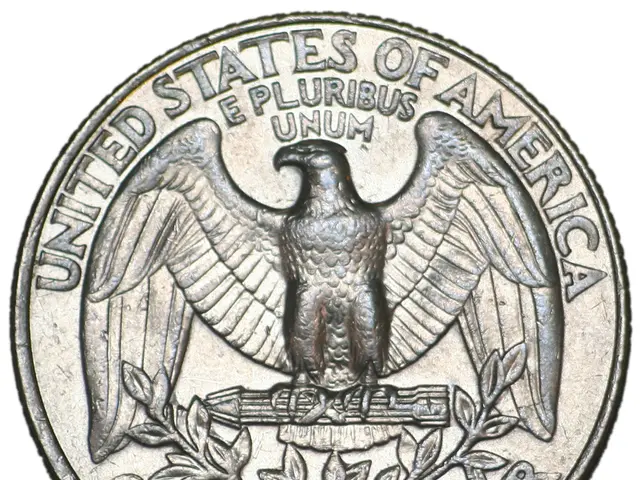Forecasted Prolonged Deterioration of U.S. Dollar Value by Goldman Sachs
The US dollar has been experiencing a long-term depreciation, and Goldman Sachs' chief economist, Jan Hatzius, has identified several structural factors behind this trend.
According to Hatzius, the US dollar's depreciation is primarily due to fiscal concerns, central bank independence questions, shifts in trade policy and tariffs, and economic growth outlook and inflation.
Large and rising US budget deficits raise doubts about debt sustainability, adversely impacting foreign investor confidence in US Treasury bonds and, consequently, the dollar's value. These fiscal issues are seen as a major driver of the longer-term dollar depreciation.
Structural risks also include concerns over the independence of the Federal Reserve (the US central bank). If investors perceive the Fed might lose autonomy or shift toward more accommodative policies regardless of inflation risks, confidence in the dollar weakens, encouraging its depreciation.
Shifts in trade policy and tariffs, while more of a near-term inflationary shock, contribute to economic uncertainty and slower growth expectations, undermining the dollar’s strength over time.
Hatzius also projects slow US GDP growth and rising inflation pressures creating a "slog" for the economy, further weighing on the dollar’s appeal as the currency loses momentum in global markets.
These structural drivers of dollar depreciation, according to Hatzius, are intertwined fiscal deficits, erosion of central bank credibility, and economic growth challenges exacerbated by policy uncertainty and tariff impacts. These factors suggest the dollar’s weakness could persist for years rather than being a short-lived adjustment.
This insight aligns with Goldman Sachs’ forecast of a sustained period of dollar devaluation linked to these underlying structural vulnerabilities rather than just cyclical factors like Fed rate moves or temporary shocks.
Meanwhile, in the world of cryptocurrency, several developments are taking place. Naoris Protocol announces a Token Generation Event for NAORIS, while VeraNet launches a decentralized AI ecosystem with community-controlled tools and services. Pepescape crypto presale raises $1 million, and DeepSnitch introduces five specialized AI agents as their token presale goes live.
Additionally, JPMorgan Chase is reportedly considering allowing clients to borrow against their crypto assets.
In the global economy, the US still runs a large current account deficit that needs to be financed by foreign investments in US assets. At the time of writing, the US spends more than it earns from the global economy, relying on foreign investment to bridge the gap. The US dollar index (DXY) is down about 10% year-to-date, reflecting this ongoing trend.
The devaluation of the US dollar has also been noted in the crypto market, with an analyst predicting rallies for XRP, ADA, DOGE, and two additional altcoins amid $74,500,000,000 capital inflows into crypto.
In a separate development, Ethereum eyes $6,000 as STON.fi Dev raises $9.5 million Series A to scale DeFi on TON. Queens Park Rangers and TokenFi announce a new partnership, while Shinkai launches Version 1.0 - on-chain AI agents go live with USDC and Coinbase x402.
However, a report states that a Bank of America customer had $219,000 stolen from their account by a woman allegedly using fictitious identities, highlighting the risks associated with digital transactions.
Hatzius calls the US dollar's poor performance over the last few months the "dog that didn't bark," implying its unexpected weakness. The structural drivers of dollar depreciation, as identified by Hatzius, suggest that this trend could persist for years rather than being a short-lived adjustment.
Cryptocurrency market participants are observing a correlation between the US dollar's depreciation and the crypto market, with an analyst predicting rallies for XRP, ADA, DOGE, and two additional altcoins amid significant capital inflows into crypto. On the other hand, concerns about digital transactions persist, as a reported theft of $219,000 from a Bank of America customer underscores the risks associated with such transactions.






